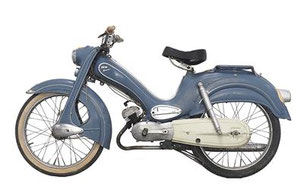
DKW Motorcycle PDF Manuals
History of DKW Motorcycles
Above on the page there are several PDF Manuals & Wiring Diagram for DKW Motorcycles.
In 1907, a young Dane Jorgen Skaft Rasmussen moved from his native country to Germany. He began researching steam cars nine years later.
After three years of research work, Rassmussen decided to apply the results obtained in practice.
His company, registered in 1919 under the name Zschopauer Motorenwerke, began producing small motorcycle engines and motorcycles themselves.
The mid-twenties were the best time for the company.
The DKW Super Sport 600 motorcycle entered the history of those years. The number in the title spoke of the number of "cubes" of the engine, which had water cooling.
The production output increased from year to year. In 1930, the DKW company became the world leader in the production of motor vehicles.
Financial difficulties in the form of non-repayment of loans to banks led the company to bankruptcy. The merger of the three companies into a single whole saved from complete collapse.
On July 29, 1932, Zschopauer Motorenwerke, Horhe-Werke and Audiwerke ceased to exist as independent companies. From that day on, they were called "Auto Union".
Another company, Wanderer, was inextricably linked with them by leasing and purchasing agreements. It was decided to reflect the "Union of four" in an emblem consisting of four intersecting rings.
Auto Union is headquartered in Chemnitz.
In the post-war years, the DKW RT125 model received attention.
Its distinguishing features were a motor with a volume of only 122 cc and a transmission with three steps.
It is noteworthy that world-famous manufacturers (Yamaha, Hummer and others) produced copies of this bike.
The lack of demand led the company to another merger with a more powerful firm. Subsequently, it was absorbed by an even more solid corporation. This is how the history of the DKW brand ended.


